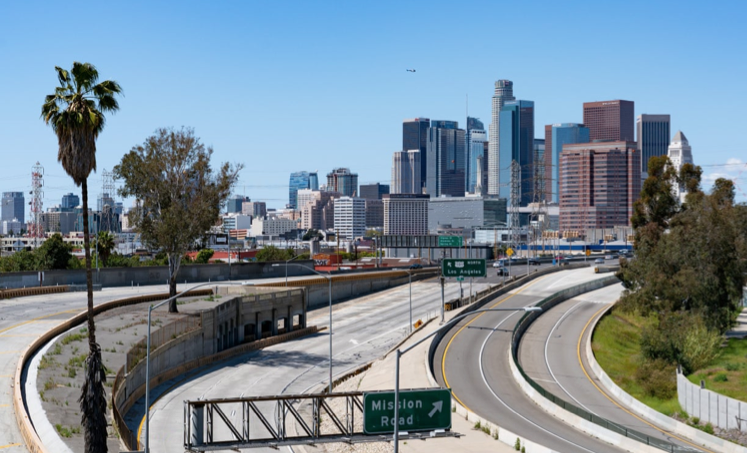CommentsDEEGAN ON LA-The 50th Anniversary of Earth Day was recently celebrated on April 22.
It was a day like many in the past several weeks when much of the city was “at home.” Clear, sweet, fresh air was noticeable, one of the benefits we have experienced during the lockdown.
The change in air quality is the result of the reduction of traffic on streets and the no-longer packed freeways. Gone for now are the tailpipe emissions from the usual heavy load of cars, trucks and busses that have been dirtying our air despite mitigations from stricter controls, and driving hybrids and electric vehicles which, to a degree, have helped reduce air pollution.
Our local climate and atmosphere have gotten a break – or let’s call it a breather. Science backs this up: the South Coast Air Quality Management District (AQMD) reports current air quality as “good” with “no risk.”
But can it last? Could this change in our daily behavior be the wedge that helps to pry open some closed minds, the skeptics who deny the impact of climate change?
“Climate and air pollutants have dropped so dramatically during the course of the COVID-19 crisis, some cities are taking the opportunity to address climate concerns as they reopen,” says Councilmember Paul Koretz (CD5), who adds that “Milan, Italy, just announced its Strade Aperte plan to reduce automobile traffic and better support local stores and restaurants. Working from home options are also being touted as successful ways to reduce pollution and increase quality of life.”
The Center for Disease Control (CDC) identifies the most common air pollutants as ground-level ozone, particle pollution (also known as particulate matter, including PM2.5 and PM10), carbon monoxide, sulfur dioxide and nitrogen dioxide. Especially harmful is the particulate matter pollution that comes from factories, cars and trucks, and construction sites that are too small to been seen in the air.
Very dangerous to our health and our climate is PM10 which can irritate the eyes, nose, and throat. Extremely dangerous is the almost invisible particulate matter called PM2.5 because it can get into the deep parts of our lungs and blood system.
Living in a worldwide pandemic caused by an invisible virus – which is analogous to the invisible PM2.5 – presents a good opportunity for us to take a deeper, broader look at what enters our lungs and blood streams. This can start with emissions that are generated by fossil fuels, especially petroleum.
The drastic cratering of oil prices caused by severely reduced consumption of car, truck and jet fuel may cause us to reconsider our reliance on fossil fuels as the main way to move us around. Oil prices have collapsed over 30% since March 13. Our roads are practically empty, and air quality has improved in a double play as the virus keeps us at home, impacting oil prices that are now caught in the dis-equilibrium of oversupply and reduced demand.
Every day, the skies are full of airplanes flying with very few passengers while generating a huge carbon footprint. Airport TSA screenings have dropped 95%.
The sharp decrease in fossil fuel production and consumption is showing us what the environment could be like if that industry were scaled back. Hasn’t the oil industry reaped enough profits over the century of its existence to balance the decline in their fortunes that a strong move to adopting more renewable, sustainable energy would bring?
As an alternative lifestyle emerges out of pandemic necessity, will we see that we really don’t need all that oil and its negative environmental consequences?
Could the rebound from the virus include a society that has adjusted to “Zooming” from home and holding online meetings, instead of zooming down freeways; to using Telehealth instead of visits to the doctor; and generally, through internet connectivity, becoming like Marshall McLuhan’s “global village?”
Cheap gas and empty roads have created one unexpected consequence: drivers who do go out have been hitting the gas pedal, zipping and zooming on near-empty freeways at very high speeds. The California Highway Patrol has noted an 87% increase in citations for speeding in excess of 100 mph, and has posted several hundred electronic freeway signs warning drivers “do not speed.”
How long it will take climate change deniers to hear sirens and see flashing lights remains to be seen.
(Tim Deegan is a civic activist whose DEEGAN ON LA weekly column about city planning, new urbanism, the environment, and the homeless appears in CityWatch. Tim can be reached at [email protected].) Edited for CityWatch by Linda Abrams.
















